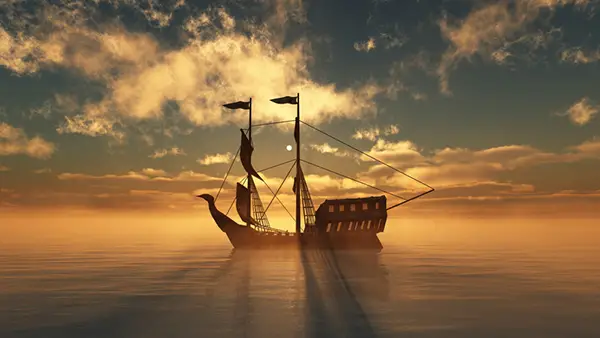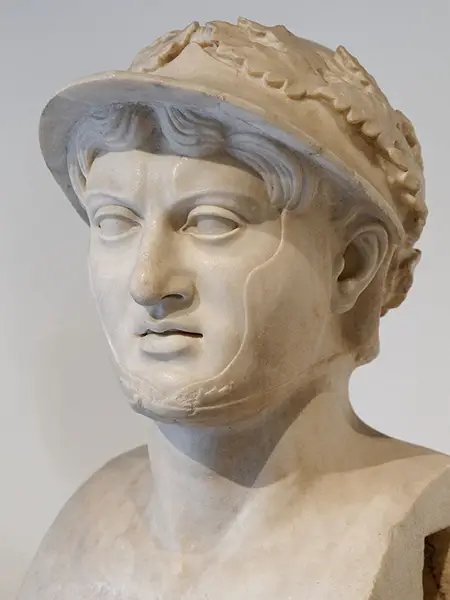First Punic War
The First Punic War between ancient Rome and Carthage was devastating to both sides in terms of money and casualties.
Beginning in 264 B.C.E., the First Punic War lasted 23 years, ending in 241 B.C.E. The war was fought on land and at sea. Most casualties on both sides occurred while fighting on the sea.

The ancient Romans suffered heavy losses at sea, mainly due to weather.
The Carthaginians also suffered heavy casualties on the sea but primarily due to new technology used by the ancient Romans. In the end, the ancient Romans defeated the Carthaginians and made them pay a large sum of tribute to Rome.
The beginning of the First Punic War

During the beginning of the 3rd century B.C.E., the Roman Republic had risen in power.
By this time, the republic had squashed attempts by the Latin League and had defeated King Pyrrhus of Epirus. As a result, the present-day Italian peninsula was in a firm grasp of the Roman Republic.
Carthage, on the other hand, still controlled much of the Mediterranean Sea trading routes. The Carthaginians had a strong navy that roamed the Strait of Sicily and the coastline of North Africa all the way to Iberia.
In 288 B.C.E., a group of mercenaries named the Mamertines took over the city of Messina on the northeastern tip of the island of Sicily.
For 20 years, the Mamertines raged havoc on the countryside and eventually became a problem for the city of Syracuse. In 265 B.C.E., Syracuse came under the rule of the tyrant Hiero II. He decided to lay siege on Messina and fight against the Mamertines.
When Hiero II attacked the Mamertines asked Rome and Carthage for help. Rome was not thrilled about helping the Mamertines. Carthage responded first and sent soldiers to help.
The ancient Romans were now not happy about the possibility of Carthage controlling the island of Sicily.
In 264 B.C.E., the ancient Romans sent troops to Sicily, which was the first time the ancient Romans had fought outside the present-day Italian peninsula. Eventually, the only two entities left fighting for control of Sicily were the Romans and Carthaginians.
Battles on land

During the First Punic War, land battles were limited. The ancient Romans preferred to fight on land, but the hilly terrain of Sicily made things difficult. Skirmishes broke out mostly for naval ports, and the Romans laid siege to many of the ports.
In 262 B.C.E., the Romans took four legions of soldiers and went to the city of Agrigentum. The city wanted help, and the Carthaginians came to fight against the Romans.
They were successful in turning away the Romans and cutting off their supplies from Syracuse. Eventually, the city would fall to the Romans after several battles.
Ten years later, the Romans tried another land campaign following several battles at sea. The Romans built a vast fleet of ships to conquer the Carthage colonies in Africa.
The Romans under Marcus Atilius Regulus were able to defeat the Carthaginians at the Battle of Cape Ecnomus. The Romans continued to ravage the countryside in Africa and tried to force the Carthaginians into peace.
Instead, the Carthaginians hired a Spartan mercenary named Xanthippus to lead their forces. He was able to reestablish the Carthaginian navy and captured Regulus at the Battle of Tunis.
Nearing the end of the conflict in 249 B.C.E., the Carthaginians sent General Hamilcar Barca, Hannibal’s father, to fight in Sicily, where he was successful in controlling most of the mainland.
But his efforts were fruitless after the Carthaginians lost their fleet ships and the war at the Battle of Aegates Islands in 241 B.C.E.
Battles on the sea

At the start of the First Punic War, the Carthaginians had the stronger of the two navies. Rome was very inexperienced at naval warfare.
Because it was difficult to move troops and supplies on the mainland in Sicily, most of the significant battles were fought at sea.
The ancient Romans constructed their first fleet of ships in 261 B.C.E. after the Battle of Agrigentum. They built similar ships like the Carthaginians called triremes and quinqueremes.
The Romans also included newer technology called a Corvus. The Corvus allowed for the skilled soldiers of the Roman army to board the ships of Carthage.
Although this new technology was useful for the Romans at the Battle of Mylae and the Battle of Ecnomus, they abandoned the technology because of navigational problems.
Even though the Romans claimed numerous naval victories, they lost the most men and ships in the First Punic War. There were two occasions of lousy weather in 255 and 253 B.C.E. that led the Romans to rethink the use of the Corvus.
After the Romans lost their fleet in 253 B.C.E., the Carthaginians ruled the seas once again because the Romans were unable to rebuild their fleet.
But the republic pleaded to the wealthy citizens of Rome to rebuild their fleet of ships. The wealthy citizens of Rome contributed enough money to rebuild the fleet that was successful in winning the war at the Battle of Aegates Islands in 241 B.C.E.
Aftermath of the First Punic War
The immediate years following the war, both powers were financially drained. Casualties on both sides were tremendous. The Romans lost upwards of 700 ships and nearly 50,000 men.
The Carthaginians lost more than 500 vessels and 30,000 soldiers. In the end, Rome had replaced Carthage as the dominant force of the seas. The turning point in the war was when the wealthy citizens of Rome paid to rebuild their fleets while the noble in Carthage refused to finance more ships or troops.
The terms of peace requested of Carthage by the Romans were a heavy price to pay. The Carthaginians were forced to leave Sicily. The nearby islands along the coast of Sicily and Africa were evacuated by Carthaginians.
They were forced to return all prisoners. They were made to pay a large sum of tribute to the Romans.
Facts about the First Punic War
- The First Punic War started in 264 B.C.E. when the Mamertines requested the help of Rome and Carthage against the Hiero II, the tyrant of Syracuse.
- At the time, Carthage sent troops first. Then the Romans sent troops to help. Eventually, the only two entities left to fight were the Romans and Carthaginians.
- Carthage controlled trade and commerce in the Mediterranean Sea with its powerful navy.
- Most of the major battles took place at sea. Land warfare consisted of sieges around naval ports.
- The Romans built a fleet of ships similar to the Carthaginians triremes and quinqueremes. The Romans also invented the Corvus, which allowed their soldiers to board Carthaginian ships.
- The Romans lost most of their ships due to bad weather because the Corvus prohibited the vessels from navigating bad weather. Eventually removed the Corvus from their vessels.
- The Romans lost 700 ships, and the Carthaginians lost 500 ships.
- The war ended with the Roman victory at the Battle of Aegates Islands in 241 B.C.E.
Questions and Answers
- How many years did the First Punic War last?
23 years
- Who had the most experienced navy at the beginning of the First Punic War?
Carthage
- How did the Romans lose most of their ships during the First Punic War?
Due to bad weather
- Land battles were mainly fought for control of what cities?
Naval port cities
- What was the new technology invented by the Romans that allowed their soldiers to quickly board Carthaginian ships?
Corvus



